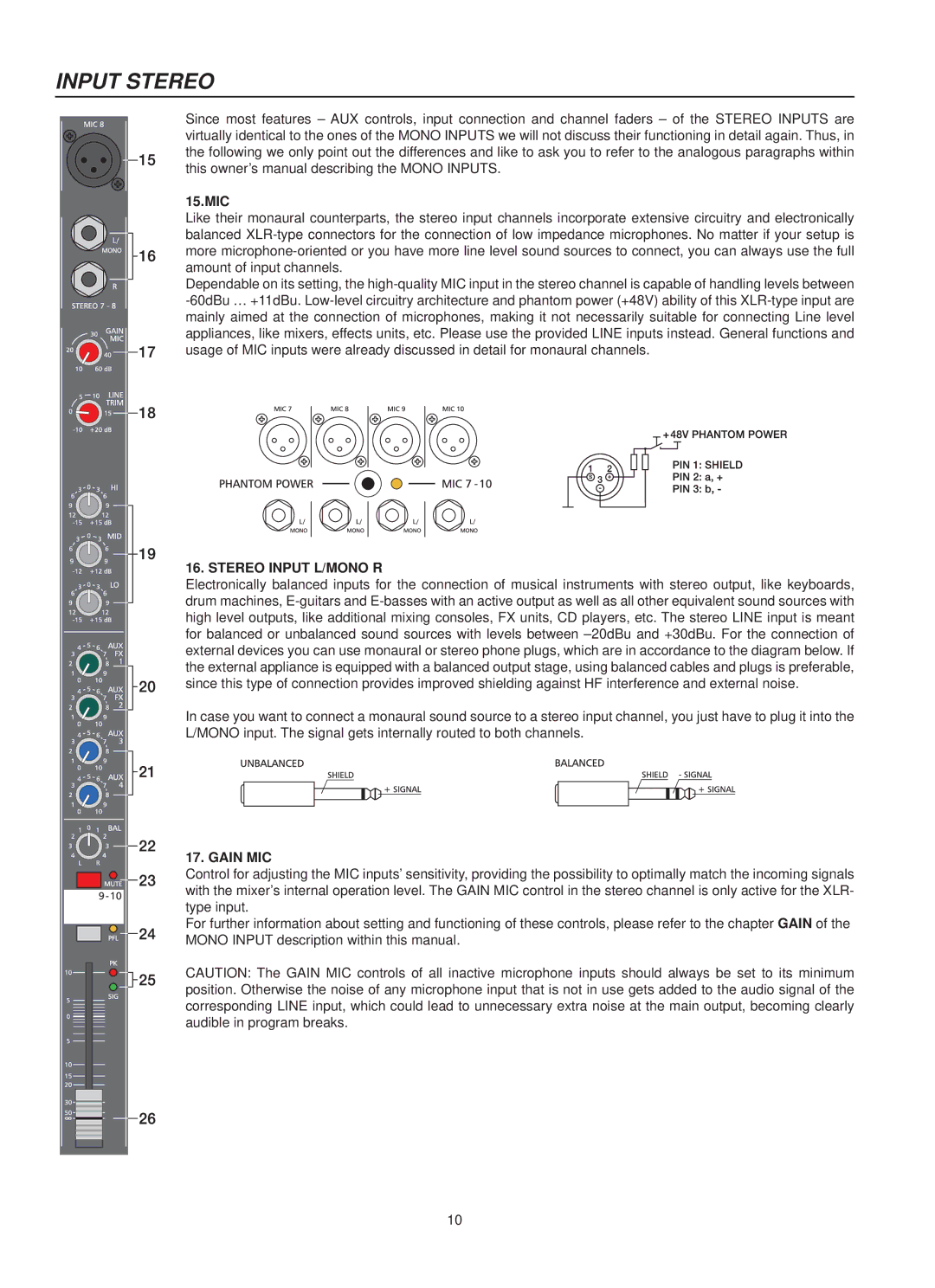
INPUT STEREO
Since most features – AUX controls, input connection and channel faders – of the STEREO INPUTS are virtually identical to the ones of the MONO INPUTS we will not discuss their functioning in detail again. Thus, in the following we only point out the differences and like to ask you to refer to the analogous paragraphs within this owner’s manual describing the MONO INPUTS.
15.MIC
Like their monaural counterparts, the stereo input channels incorporate extensive circuitry and electronically balanced
Dependable on its setting, the
16. STEREO INPUT L/MONO R
Electronically balanced inputs for the connection of musical instruments with stereo output, like keyboards, drum machines,
In case you want to connect a monaural sound source to a stereo input channel, you just have to plug it into the L/MONO input. The signal gets internally routed to both channels.
17. GAIN MIC
Control for adjusting the MIC inputs’ sensitivity, providing the possibility to optimally match the incoming signals with the mixer’s internal operation level. The GAIN MIC control in the stereo channel is only active for the XLR- type input.
For further information about setting and functioning of these controls, please refer to the chapter GAIN of the MONO INPUT description within this manual.
CAUTION: The GAIN MIC controls of all inactive microphone inputs should always be set to its minimum position. Otherwise the noise of any microphone input that is not in use gets added to the audio signal of the corresponding LINE input, which could lead to unnecessary extra noise at the main output, becoming clearly audible in program breaks.
10
